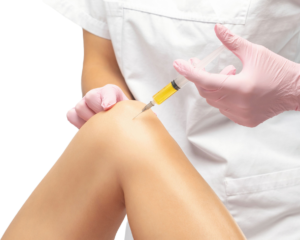Maryland Truck Accident Lawyer will do all the work to recover fair compensation for your injuries. This includes investigating your case, identifying the at-fault party, building a strong evidence file, and handling all communication with insurance companies.
You should look for an attorney who specializes in truck accidents, has a good track record, and understands the unique issues that these cases present. Additionally, they should be accessible and communicate well with you.

A truck accident lawyer is a legal representative who supports and guides clients during a personal injury case. They help victims pursue compensation for damages such as medical expenses, lost income and property damage. They also help them file police reports and communicate with insurance companies.
When choosing a Truck Accident Lawyer, look for one with specialized training and experience in truck accidents. They should have in-depth knowledge of the industry’s regulations and understand the severe consequences of these accidents. They should also have strong analytical and investigative skills.
In addition to examining medical records and accident reports, they will review insurance policies and contract agreements. They will use these documents to identify potential issues that may affect the outcome of your case. They should also have in-depth knowledge of the industry’s standards for driver qualifications, safety equipment and cargo loading.
They will also analyze dashcam videos, surveillance footage and smartphone photos from witnesses and passersby to identify the cause of the accident. They will also conduct interviews and collect expert testimonies to strengthen your claim.
After establishing liability, they will submit a demand letter to the at-fault party’s insurance company. They will outline the facts of the accident and request a sum of money for the victim’s damages. If negotiations fail, they will prepare for trial.
If you or a loved one was injured in a collision with a commercial truck, it is important to seek legal representation as soon as possible. A skilled NYC truck accident lawyer can help you navigate the complex legal process and obtain maximum compensation for your injuries.
In addition to pursuing compensation for your medical bills, lost wages and property damage, you can also receive monetary compensation for the loss of companionship and the enjoyment of life. This is referred to as “compensatory damages.” The attorneys at Kaplan & Kaplan P.C. handle cases involving truck accidents throughout New York City and the surrounding areas. They can also help you pursue wrongful death claims if you have lost a loved one in a truck accident.
Experience
Truck accidents can be devastating due to the large size and weight of commercial vehicles. They can also carry dangerous chemicals or materials that pose a risk to those who are involved in the crash. These types of crashes can be extremely complex and require a team of professionals to investigate and build a strong case. A specialized truck accident lawyer is experienced in handling these types of cases and will have access to a network of resources and experts that can help with the investigation and building a case.
They have a deep understanding of trucking regulations and liability issues, making them an asset to any case. They also have excellent case management skills and are adept at gathering evidence and presenting a strong case in court. In addition, they have a high level of empathy and communication skills that allow them to effectively support their clients throughout the legal process.
One of the first things they will do is to conduct a thorough investigation of your accident. They will review all the evidence from the scene, such as police reports, video or photos, any data from the truck’s onboard information system, eyewitness statements, and expert testimony. This evidence will be used to determine the extent of your damages.
They will also work with the insurance company to negotiate a fair settlement. If negotiations are unsuccessful, they will file a lawsuit, which begins the formal legal process. In this stage, they will prepare a complaint that will outline your damages and demand fair compensation.
Damages can include medical bills, lost wages from employment or business, property damage, and pain and suffering. Your attorney will use the gathered evidence and expert testimonies to present a compelling case in court that will help you secure maximum compensation for your injuries and losses.
In some cases, a reputable truck accident lawyer will be able to secure a reasonable settlement through negotiations with the at-fault party’s insurance company. However, they are always ready to take your case all the way to trial if necessary. They are skilled negotiators and will fight to ensure that you receive the maximum compensation for your injuries and losses.
Communication
A Truck Accident Lawyer must be able to effectively communicate with their clients and other parties involved in the case. This includes verbal and written communication skills, active listening, empathy, and assertiveness. These skills enable truck accident lawyers to support their clients throughout the legal process and negotiate fair settlements or win in court if necessary.
During the case-building process, truck accident lawyers gather vital evidence by requesting police reports, medical records, repair estimates, insurance claim documents, smartphone photos and video, eyewitness statements, and expert witness testimony. They also analyze state laws, precedent cases, and other statutes that may apply to the case.
Once they have a strong understanding of the case’s facts and evidence, truck accident lawyers can help their clients file a comprehensive claim for damages. Damages can include compensation for lost wages, medical bills, property damage, pain and suffering, and emotional distress. They are also able to file claims for punitive damages in some instances.
Truck accidents can be catastrophic and life-changing, so it’s crucial to hire an attorney who can provide peace of mind for their clients. A good lawyer will be able to answer questions promptly and thoroughly and will fight to secure maximum compensation for their clients.
When selecting a truck accident lawyer, look for one with a flexible schedule so that they can meet their clients in person whenever possible. They should be willing to go to hospitals, coffee shops, or living rooms to discuss the case and gather valuable information. This flexibility can make all the difference in a successful outcome for your case.
Another important consideration is an attorney’s caseload and how many cases they have on their plate. Too much work can cause them to neglect your case, which can lead to a poorer outcome. It’s best to find a lawyer who is experienced and has a moderate caseload so that they can dedicate their time and resources to your case.
During the selection process, it’s also worth considering whether or not your attorney will be handling your case personally or if they will pawn it off on junior associates. While this is not necessarily a bad thing, it’s worth asking about in advance to avoid any surprises down the road.
Fees
Injuries sustained in truck accidents can be catastrophic, resulting in medical bills and lost income. It can be difficult to understand the full amount of damages you may qualify for, but an experienced truck accident lawyer can determine this and build a strong case on your behalf. They can also negotiate with insurance companies and other parties involved to ensure you receive fair compensation for your losses.
The cost of a truck accident attorney can vary depending on the complexity of your case and whether or not it goes to trial. However, they are typically worth the investment in terms of receiving fair compensation and eliminating the stress of navigating the post-collision legal process independently. Additionally, an attorney can help you avoid missing out on a higher settlement due to mistakes that could be made when handling a claim yourself.
Many attorneys work on a contingency basis, meaning they only get paid if they win your case and you receive compensation. Retainer fees and payment plans are also options, and it’s important to discuss these with your potential lawyer before hiring them.
When choosing a truck accident attorney, look for one who has a proven track record of winning cases and providing exceptional customer service. They should be able to answer your questions in a timely manner and provide detailed updates on the progress of your case. Additionally, they should be able to identify any potential expenses and provide you with an upfront estimate of their costs before beginning work on your case.
If you’ve been involved in a truck accident, contact the Law Firm to schedule your free consultation. Our team of experienced and compassionate attorneys can determine the value of your case and force the people responsible for the crash to make you a fair offer. We will fight for your right to receive full and fair compensation for your injuries, property damage, lost income, pain and suffering, and other losses. We will take the time to listen to your concerns and answer your questions and we will guide you every step of the way.


